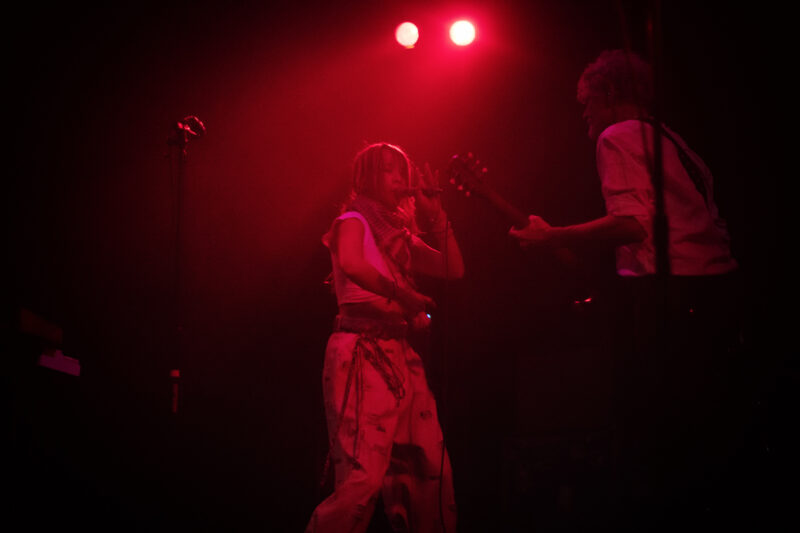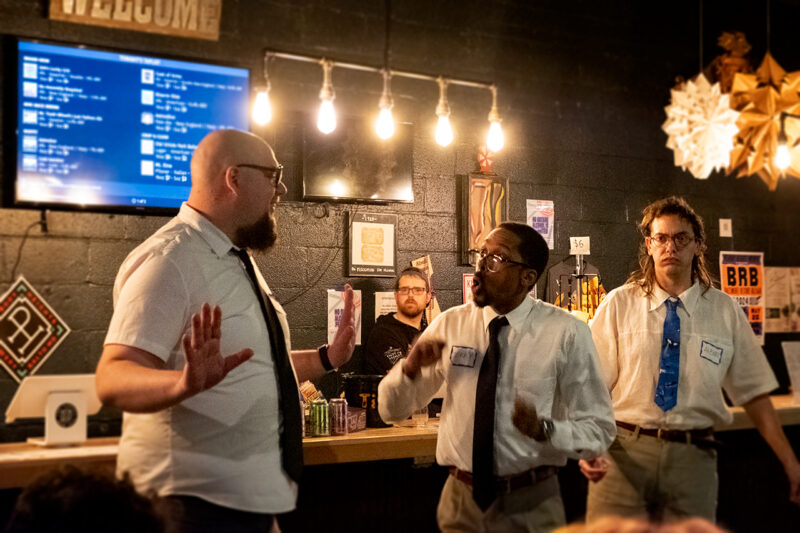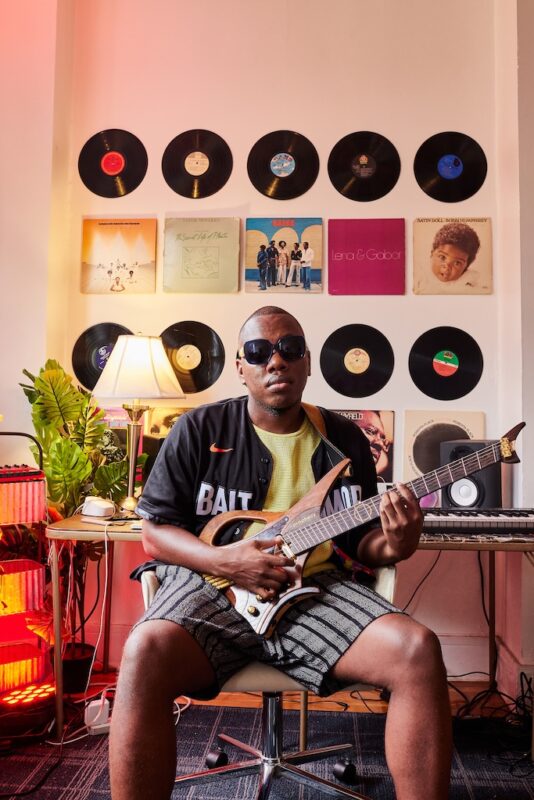Eames Armstrong Discusses the International Noise Conference and High Zero Festival with Tom Boram
Tom Boram‘s sonic and visual output is diverse, complex, bizarre, and really fun. We met recently and connected quickly on the intersections and dissonances of the visual art and experimental music worlds. An accomplished and talented multi-instrumentalist, Tom is also a founder of the High Zero Festival of Improvised and Experimental Music. My background is fine art, but performance art has led me towards noise music and I’m thrilled to talk to artists like Tom who churn and confuse the boundaries around so many disciplines.
We also connected on shared and compared experiences of grad school. He just received his MFA in New Media from UMBC and I just graduated from GWU in Interdisciplinary Studio Art. Tom says his work “involves awkward and over-complicated systems that make strange noises and/or endless television genre nonsense.” His thesis work will be on view at Maryland Art Place as part of Young Blood, opening Thursday, July 14 and on view through August 20. His interactive video installation is called Star Trick: The Next Iteration. Check out the trailer link yourself; it is difficult to put into words.
Tom invited me to take part in the Baltimore stop of the International Noise Conference (INC) that was on July 5, where he performed as well. We are also both in High Zero this Fall, a big first for me, but not so much for him. This will be the seventeenth year of High Zero, happening September 15-18. Leading up to INC, I wanted to dig a little deeper into these very different events, and learn more about Tom’s own work and ways of thinking.
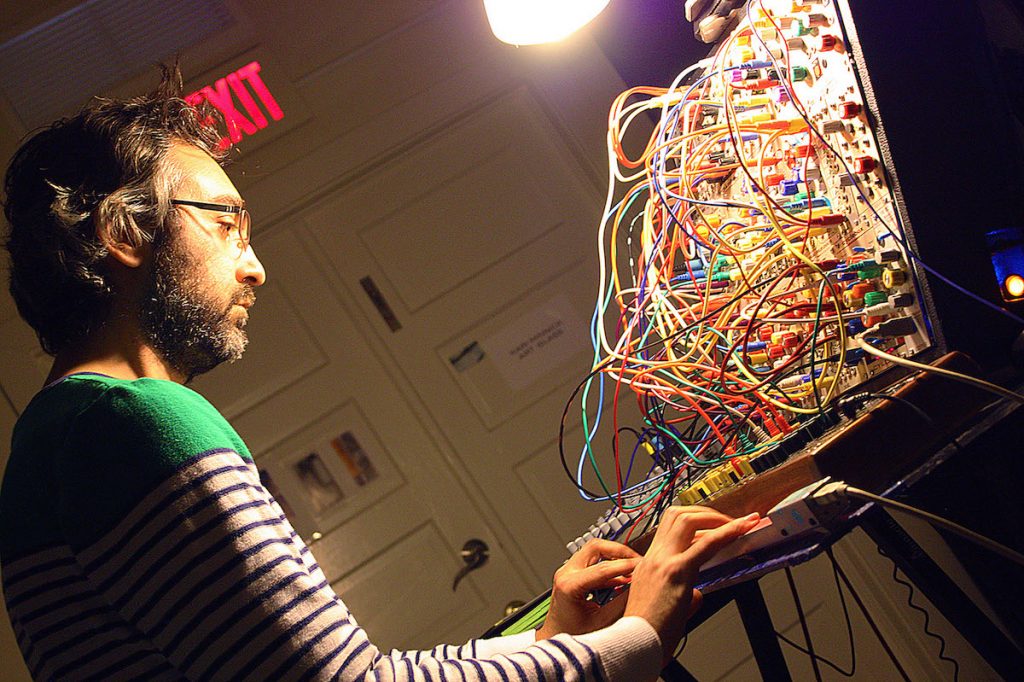
Eames Armstrong: Hi! I’m looking forward to coming up next week for International Noise Conference, have you worked with it before?
Tom Boram: I played an INC in Miami last year. I’ve been to one or two in Baltimore too. I feel like it was sort of a joke in the beginning. Rat Bastard’s band, The Laundry Room Squelchers, used to come and play a lot at the original True Vine over 10 years ago. Once I saw their performance listed as “International Noise Conference” and took it seriously for a second, but thought better of it. The old True Vine could only contain about 20 people comfortably! It is ironic for sure, but I think at this point it is also ICONIC. So it cuts both ways.
Yeah, it seems both extremely serious and extremely playful. Is play something you think about in your own work?
Yes! I am attracted to “play” because I think “play” is connected with “experimenting.” Improvisation and experimentation are related ideas. Everyone does both in their practice in some way, usually in developing work. But many “experimental” musicians make their improvised aspects the focus of their energy. In a way it ignores the “maturing” of an idea in favor of its raw state.
Absolutely, and the aspect of play was really present in the piece I saw you do at RhizomeDC a few weeks ago, but it was also quite technically complex. Can you tell me a bit more about that work?
The piece I did at RhizomeDC was a sort of work in progress, but they all are that. I want to make everything sort of ongoing. In this case I’ve been working for a few years on AV synthesis systems. Instead of just using a synthesizer to create unique performance systems for music, I wanted to make an equivalent system for video, and have the two be interconnected – so any gesture or change in either system affects the other in some way.
It’s not a new idea – but for me it is interesting because I’m not outsourcing to a VJ for visual, or rolling a .MOV while I play my instrument. I am programming the whole thing myself, which does spread the depth of both a little thin, but it pushes me to keep looking for relationships between sound and light, analogue and digital. I love systems and find a lot of beauty in them. I need to explore both!
How do you characterize a system?
A system, in my understanding, is like an “environment.” In the environment there are laws, or boundaries, but a very large range of possible states for the environment be in at a given moment. It is dynamic, in that its primary components have varying degrees of agency. A well thought out system has a sensibility, or logic, but also is full of surprises.
So there is room for improvisation in a system, as opposed to something that is fully pre-planned or fixed.
Yes! I think of a complex system as collaborator. I’m sure there are interesting examples of creating a system for some fixed result, but part of the fun of technology is “playing” with the results of a somewhat unpredictable creation. To build a system just to get one result, then to take it apart seems a little wasteful. I’m not above doing that though.
It seems that there are specific and rather different organizing ideas (systems?) that bring together INC and High Zero Festival.
They are sort of antithetical! INC is very anarchic. As I said, its origins are very humble. It was really just Rat driving all the hell over the place and giving a city/community a few weeks notice to get as many noise bands/artists to perform. It became more of a “thing” over time, but even now they can be pretty sloppy affairs in somebody’s back yard. HZ sort of has an origin like this, in that it originates with a humble “seeding” of underground sub-cultures. The difference I think, is that since its inception High Zero was meant to show “experimental” music as legit from jump – instead of appearing marginal, i.e. informal, deep underground etc. So, for someone coming in cold, it looks like the production value of any “music festival,” though the content could be “out” or challenging.
In the 80s and 90s a guy named Jack Wright used to drive all over the country (not unlike Rat) playing free improvised saxophone with whoever was willing in different cities. He made a big impression in Baltimore (he dropped out of a JHU PHD program in the early 70’s I think) and HZ in the late 90s came in large part from his influence “seeding” free improvisation here.
HZ, then, has this grassroots origin, but is sort of “intellectual,” a more “purist” approach where sound is the most important thing. INC, I think, is more of a “social experiment” and relies on very informal organizing and is irreverent about sound – “low production value.” It’s not good to generalize of course – HZ has had some socially VERY strange performances and these are the favorite of many people, myself included. However, HZ also has a pretty standardized structure and presentation.
For sure, some of the most powerful performance art events I’ve attended have also been the lowest production- there is a kind of intensity and immediacy, but that is certainly not always the case. Interesting about Jack Wright influencing a whole scene. Are there any artists/musicians today that are particularly influential on the work you’re doing?
I think the artists that hit me when I was younger are still the strong motivators because they shaped me more subconsciously. I like an overall superb artist – someone with very good technique who is also a superb performer and can kill an audience. However, I also like bizarre and awkward and inept and I can be quite inspired by that.
I’m interested in the “impure” artists, people who mix their practice up a lot and defy easy category. Robert Beatty is a really amazing artist – a designer, musician, filmmaker. Spencer Yeh is tremendous – someone who can cross scenes and cliques easily. I love Peter Blasser and his instrument design company. He is sort of a conceptual artist, sound artist, performer and sculptor disguised as an entrepreneur. Jenny Graf is another incredible performer and multi-talent. Her and Chiara Giovando were a big influence on me to do video as part of my music practice. Stephanie Barber did some really strange performances in High Zero and I think she “improvises” in an amazing way – especially in person. Her video, film and text work is not improvised, but HUGE and complex. Jeff Carey’s sound and light system is amazing. He has got that down very tight.
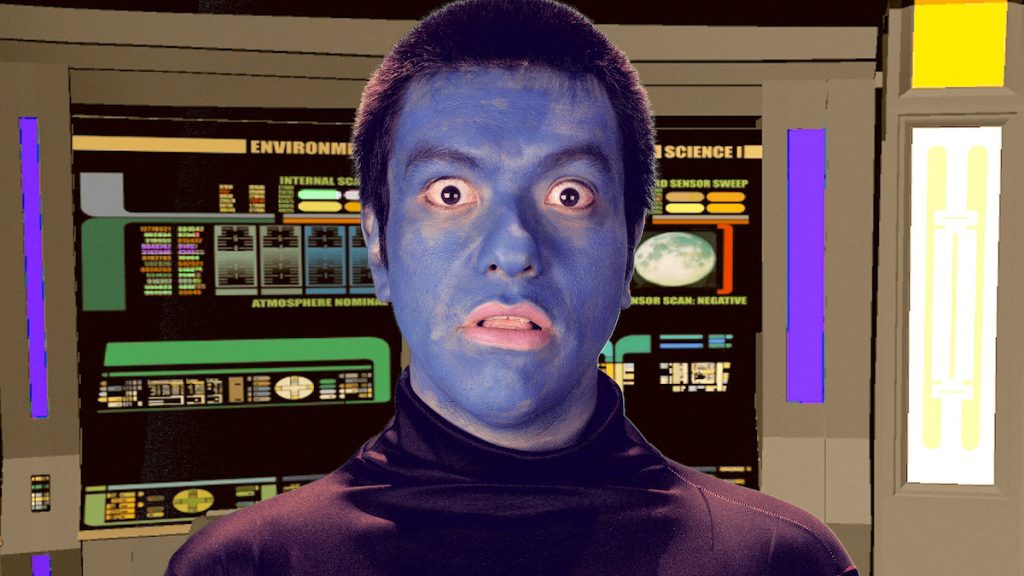
The visual is so crucial in some of these artists, and your, work- is there much dialogue or overlap in experimental music and the visual art community in Baltimore?
Not exactly, in my opinion, no. I think there are some mental traps that go with both visual artists and musicians that keep them “boxed.”
For example, I had trouble at first in grad school trying to explain myself to people. Coming from music, I think of the visual as “music.” It is fairly formal and abstract. Often people involved with visual art have a very textual way of thinking about it.
More idea-oriented?
Yes. But, I make “movies” and projects that come from text. Maybe its “context” that is the problem that I have, where i feel that there is some incompatibility with music and visual art. My background was so different that I couldn’t communicate to many peers and professors who had art world and academic backgrounds in a way that could make them understand my ideas and approach.
I had similar difficulties in grad school, I would show videos of performances and some of my classmates wouldn’t respond unless I stated exactly what it was “about” and what I was “trying to do.”
A lot of visual art is experiential, very sensual, like….I dunno, James Turrell light environments. I think that Anish Kapoor or Ryoji Ikeda are successful in a contemporary art context and do amazing stuff that is stylized, formal, sensual, visceral – “musical” maybe. But I find that these sorts of artists aren’t “concept” driven and could be scene as “medium specific” which could seem very bland in a contemporary art context – and they succeed perhaps because they are virtuosi and work so large scale.
On the other side, some famous music is conceptual and “text-y” like Robert Ashley or Negativeland but most music is experiential, either visceral/emotional or interesting formally. So to generalize – for the collaboration to occur, the musician and the visual artist – I think some of those prejudices need to break down.
I don’t think writing a “soundtrack” to a photography exhibit or a musician scoring an animation is much of a collaboration, because it doesn’t break down either “box.” The soundtrack usually just manipulates the perception of the visual. It is sort of a “canned” affair. A soundtrack is a “subtext” to a video/animation. The true “collaboration,” in my mind, would be every step of creation on both sides done together, not really “handed off.” That’s why the performance “system” of light and sound interesting to me.
Yes!
That was a LONG roundabout way to say it on my part. I wonder what your connection is to noise music and how you think it relates to performance art?
I thought of myself for a long time as a “noise tourist”- still kind of do, my realm is more visual and performance art. Making soundtracks for my performances evolved into doing sound live in performances, turned into getting invited to perform in more experimental music/noise contexts- a funny shift between my work getting called a “piece” to a “set” that I’ve been thinking about.
Exactly, so you’re transgressing. In the early days of High Zero myself and some other folks around here were really into using the festival “sets” as ways of doing shenanigans – I don’t know, almost anything other than playing music. Stacking chairs, destroying guitars (I once destroyed a sitar at High Zero, about 17 years ago). Anyhow, at that time I thought of the improvised music “set” as visual, that it wasn’t interesting unless something interesting happened that was VISUAL. Many of the “serious” improvising musicians who came to the fest thought it was pretty amateurish.
I think some loved it, but others thought that Baltimore was nurturing a sort of “non-musical” clownish kind of thing. I mellowed out eventually because I wanted to focus on playing more…. I love good playing… “musical” playing for lack of a better word. The whole scene kind of matured and the music improved, and I think at the same time as a result of that early irreverence High Zero has a much less “stuffy” atmosphere than a “new music” event or European style festival.
I remember thinking back then that even though I “played music” my whole life, all I wanted to do at High Zero was roll around on the floor and sit on people’s laps and eat pretzels or whatever. Its interesting… I need to analyze more. For about five years there I wanted to be a performance artist, but only at music concerts! For me, it wouldn’t have worked in a gallery… it would only have worked if the audience was expecting music. Haha.
Yeah! I get that. I have been having fun moving into “dance” contexts as well and doing droney sound and just like spitting on the floor.
Music can be really boring. I think in my 20’s I just needed to shit on music a bit… but at the same time I had to *be* a musician to understand how to shit on it correctly. I didn’t want to “not be a musician.” Anyhow, I think that is connected to what you’re doing too, but having this “late entry” into noise music. A lot of the dichotomy I spoke of earlier between the visual and music must be just a matter of venue and audience expectation.
*****
Check out Tom Boram’s work in Young Blood at Maryland Art Place, up through August 20, 2016.
Author Eames Armstrong works in performance, noise, language, and time. Eames is based in Washington, D.C. where they organize performance events and exhibitions.
E13: Discourse, the 13th year of Transformer’s annual Exercises for Emerging Artists Program engages DC based emerging art writers Eames Armstrong, Ikram Lakhdhar, Christine Bang, Ani Bradberry & Martina Dodd, in facilitating & promoting community exchange through critical arts dialogue.
Photo credit (Portrait): Intangible Arts




